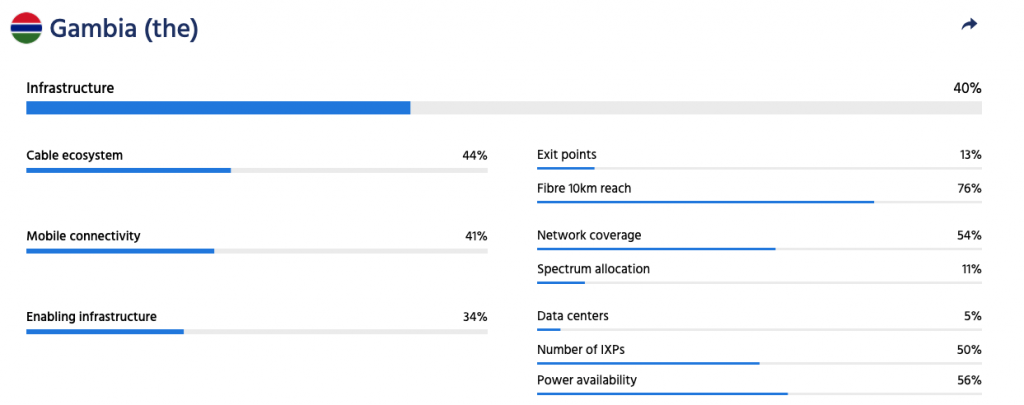On the 4 January, 2022, The Gambia, the smallest country in mainland Africa, was completely cut off from the Internet for more than eight hours, leaving almost 2.5 million people without connectivity. Gamtel, the state-owned operator, released a communique on 5 January, explaining the reasons of the outage.
What Happened?
Most of the international traffic of The Gambia is routed through the ACE (Africa Coast to Europe) submarine cable, which serves 24 countries in West Africa and Europe. There is one cable landing station located in Banjul, the capital city.

As per the Gambian Public Utilities Regulatory Authority (PURA), the ACE cable has been experiencing several cable cuts in the last few years and has been the reason for repeated Internet outages in the country. Operators were urged to find alternative links to redirect traffic in and out of the country if the main route is not-operational. As a result, Gamtel used its two other international gateways located in Karanga (north) and Seleti (south) to re-route traffic. Capacity on the alternative links is provided by Sonatel, the incumbent Senegalese operator.
“The outage on 5 January was due to a faulty network card in Toubakota, Senegal, where both north and south links converge.”
Internet Resilience Index (IRI)
To help support the development of policies and infrastructure to improve Internet resilience at the local, regional, and global level, the Internet Society has developed a framework to keep track of Internet resilience metrics. In short, the framework evaluates Internet resilience based on the following four pillars:
- Infrastructure: The existence and availability of the physical infrastructure that provides Internet connectivity.
- Performance: The ability of the network to provide end users with seamless and reliable access to Internet services
- Security: The ability of the network to resist intentional or unintentional disruptions through the adoption of security technologies and best practices
- Market Readiness: The ability of the market to self-regulate and provide affordable prices to end users by maintaining a diverse and competitive market
Internet Resilience in The Gambia
According to the Internet Society’s Internet Resilience Index, The Gambia has an overall resilience index of 43%, and is ranked 29th in Africa. With regards to infrastructure, the country has an index of 40% and is ranked 19th in Africa. The country has four exit points (international gateways), decent coverage of terrestrial fiber (75% of the population is within a 10-km reach of a fiber line), and a quite robust mobile connectivity score with 88% of the population covered by 3G.

Infrastructure score of The Gambia from https://pulse.internetsociety.org/resilience
Market Dynamics
The infrastructure metrics look good on paper, but let’s take a deeper look at the market dynamics. Starting with market concentration, The Gambia is just above the “moderately concentrated” threshold with a score of 2,700 (a score of 2,500 and above means “high concentration”). There are three main operators QCell, Africell and Gamtel, with 35%, 32% and 20% respectively of market share (source: APNIC).
In terms of Internet transit, Gamtel and Sonatel, as well as Opentransit Orange, seem to be dominating the scene. To understand the dependency between networks, we used the AS Hegemony score from IIJ. The above three operators provide transit to all other Autonomous System Numbers (ASNs) in the Gambia. With the ACE cable under repair, the Opentransit link (which is a Tier-1 operator) and which connects The Gambia to the Internet was not operational. The fallback link was therefore through Sonatel, which is also a transit provider for all ASNs in the Gambia. The fault on the only operational Sonatel link on 4 January, as expected, brought down Internet connectivity for the whole country.

Recommendations
To improve the country’s Internet resilience, it is important to have an additional submarine cable connecting the country and ideally, using a different cable landing station.
On the transit side, operators should seek to have additional links with different providers on different circuits and not solely relying on one provider only.
With regards to peering, network operators should be encouraged to peer and exchange local traffic. This would help maintain local connectivity and access to critical e-government services in the event of an Internet outage.
Find out more about how The Internet Society is tracking Internet Resilience in Africa and how your country scores on the Internet Resilience Index here.
For a more in-depth analysis of this outage, see our data partner Cloudflare’s blog post here.


